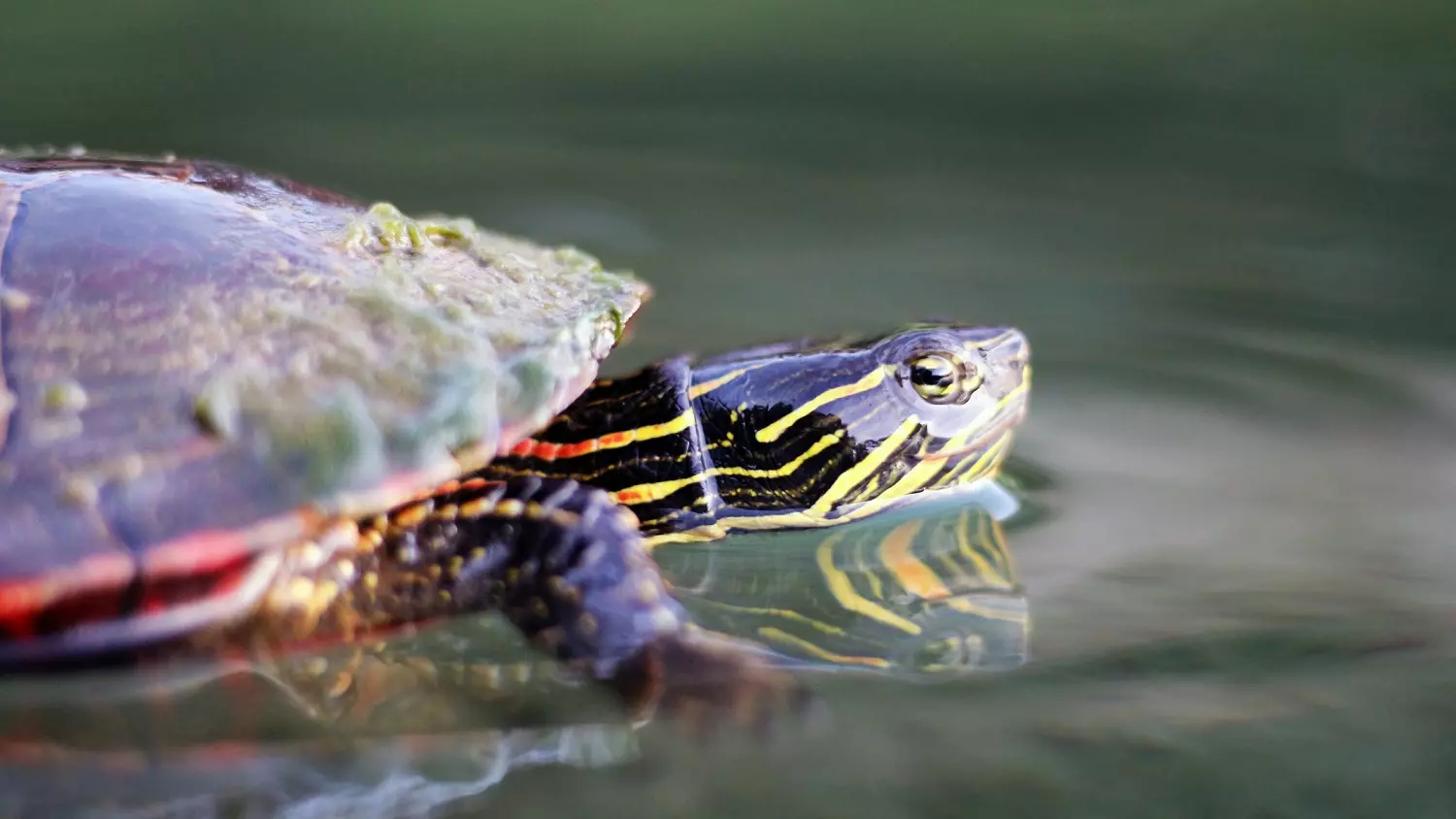Picture yourself kayaking along the shore of a lake when you see a group of painted turtles sitting on a log basking in the morning sun. All of them plunging in the water when you paddle too close.
What a thrill; an exciting event as you enjoy God’s creation.
The large majority of people like turtles, as most are gentle creatures that carry their armor plating wherever they go. In fact, 21 states have made a turtle or tortoise their state reptile.
As you continue your kayaking you think about the life of the turtle and a thought comes to your mind.
Where do turtles go in the winter?
How do turtles survive when the lakes freeze over and there is snow on the ground?
Before we answer these questions, let’s look at the most common of the North American pond turtles, the painted turtle.
This turtle lives from southern Canada to northern Mexico, everywhere except the Rocky Mountains and the southwest. They inhabit slow-running rivers, lakes, and marshes. Being cold blooded, you can often see them warming themselves in the sun on some log or rock, diving in the water at the first sight of danger.
They eat aquatic plants and insects, worms, tadpoles and minnows. Rodents, crows and raccoons will dig up eggs and even eat hatchlings given the chance. And though their shell protects them from most predators, raccoons and mink sometimes will prey on them.
This handsome turtle can measure anywhere from 3 to 8 inches long, with the female growing slightly larger than the male. The females lay 6 to 20 eggs in separate ground-holes; perhaps to protect the eggs from predators since if one is found, the rest of the eggs remain hidden.
The painted turtle’s shell is slightly wider than it is long, giving these turtles the classic oval shape that is so familiar with turtles. Strong back legs and web feet makes these turtles excellent swimmers.
Now to the question at hand: where do pond turtles go during the cold winter months?
They dive down to the bottom of the pond and settle there until the warmth of spring arrives. But how does an air-breathing reptile hold its breath for the hundred-odd days this takes? After all, with a sheet of ice over the pond, turtles can’t come to the surface to breathe.
Turtles, as with all reptiles are cold-blooded; their bodies rely on external sources of heat. The scientific term for this is ectotherm. A turtle’s body temperature is the same as that of its environment. If the pond water is 37° F, so is the turtle. And how does this affect their need for oxygen?
The answer lies in the connection between body temperature and metabolism.
A cold turtle in cold water has a slow metabolism. The colder the turtle is, the slower his metabolism. And the slower the metabolism the lower his body’s energy and oxygen demands.
When turtles hibernate, their last dinner gives him enough energy to survive without food the rest of the winter. And pond water moving across his skin that is full of surface blood vessels provides enough oxygen to support his minimal needs without using his lungs at all.
That’s right, God has created pond turtles with the ability to extract oxygen from the water through their skin without needing to breathe it in. The technical term is cloacal respiration.
Obviously cloacal respiration is very useful, but it does have a down side. When you spend 100 days in an ice-covered pond, very little new oxygen gets into the water. Other animals are also using up the oxygen that the aquatic plants produced during the summer until there is very little left by winter’s end.
The pond may become hypoxic (low oxygen content) or even fully anoxic (depleted of oxygen).
Our wonderous Creator gave the painted turtle the ability to tolerate this stress situation by switching her metabolism to one that doesn’t require oxygen. This can save a turtle’s life in a pinch, but it is still dangerous or even lethal if this switch stays on too long because acids build up in her tissues.
To solve this acid problem the painted turtle can utilize the calcium from her shell to neutralize the acid. This is a similar thing to what we do when we take calcium antacids for heartburn.
When spring finally arrives these turtles have very little energy and are in desperate need to bask in the sun to get their body temperatures up. It is only when her body temperature rises and her metabolism goes up that she is able to eliminate the excess acids from their bodies.
We have a glorious and amazing Creator God who has given pond turtles the tools they need to survive under the pond ice the entire winter.
And God said, ”Let the land produce living creatures according to their kinds: the livestock, the creatures that move along the ground, and the wild animals, each according to its kind. And it was so. Genesis 1:24








Another great article by Mr. Velting! I love these species profiles. Each one certainly gives glory to our Creator! William